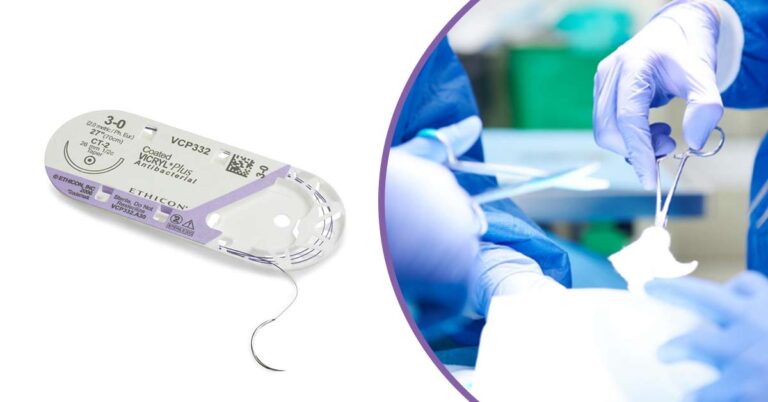Silk suture is a sterile non-absorbable surgical suture made of organic protein called fibroin. The organic protein, fibroin, is derived from domesticated silkworm species Bombyx mori of the family Bombycidae. The sutures are processed to remove the naturally-occurring sericin waxes and gums.
The braided silk suture is coated with silicone or wax. The manufacturing process which involves braiding and coating makes the suture to be soft. The coating also improves the smooth flow of the suture through the tissue, while also maintaining optimal knot security.
Silk sutures have low tensile strength, but are easier to handle and ties securely. As a multifilament suture, braided silk does not prevent infection.
Silk is a natural non-absorbable suture, while nylon, surgical steel, and polypropylene are synthetic non-absorbable sutures. These non-absorbable sutures are suitable for areas of the body with high degree of mechanical or shear force like tendons, and some skin areas.
Before the introduction of synthetic sutures, silk (nonabsorbable) and gut were the most commonly used sutures.
Popular brands of silk sutures include polyfilament, Permahand, Ethicon; Sofsilk, Covidien
How the Silk Suture Works
The silk suture elicit acute inflammatory reaction in the body tissue, followed by the gradual encapsulation of the suture by the fibrous connective tissue.
Even though the silk suture is classified by the USP as non-absorbable, it may witness phagocytosis and progressive degradation of the proteinaceous silk fibers in vivo, resulting in the loss of tensile strength over about a year.
It gradually gets encapsulated by fibrous scar tissue and disappears after about 2 years.
Sizes and Types of Silk Sutures
Silk sutures are available as white or colored black with Logwood extract and uniformly coated with silicone or wax.
The sutures are available in different gauge sizes and lengths, non-needled or attached to stainless steel needles of varying types, sizes and shapes. The needles can be permanent or removable. The needle is mostly large and curved.
Silk is available in USP sizes 9-0,8-0, 7-0, 6-0, 5-0, 4-0, 3-0, 2-0, 1-0, 0, 1, 2, 3, 4, 5.
Main Uses of Silk Sutures
Silk is now less used generally due to advancement in suture technology.
Silk suture is used in general soft tissue approximation and/or ligation in all surgical procedures. It is also used in cardiovascular, ophthalmic, microsurgery, and neurological procedures.
It is also commonly used to close oral mucosa due to its softness in the mouth. However, as it needs to be removed, chromic or plain is used alternatively in the mouth.
Silk suture is also used to secure surgical tubes on the bodies surface. It can also be used as a temporary skin closure after fasciotomy or a trauma laparotomy.
Contraindications
- Do not use in patients with sensitivity or allergy to silk material.
- Since there is gradual loss of tensile strength, it should not be used in areas where permanent retention of tensile strength is required.
- It is also rarely used internally due to tissue reaction and loss of tensile strength over months.
References:
- https://www.medtronic.com/en-us/healthcare-professionals/products/wound-closure/sutures/nonabsorbable-sutures/sofsilk-silk-suture.html
- https://www.jnjmedtech.com/en-EMEA/product/perma-hand-silk-suture
- https://www.teleflexmedicaloem.com/suture-and-fiber-technologies-2/silk/
- https://geekymedics.com/suture-material/











